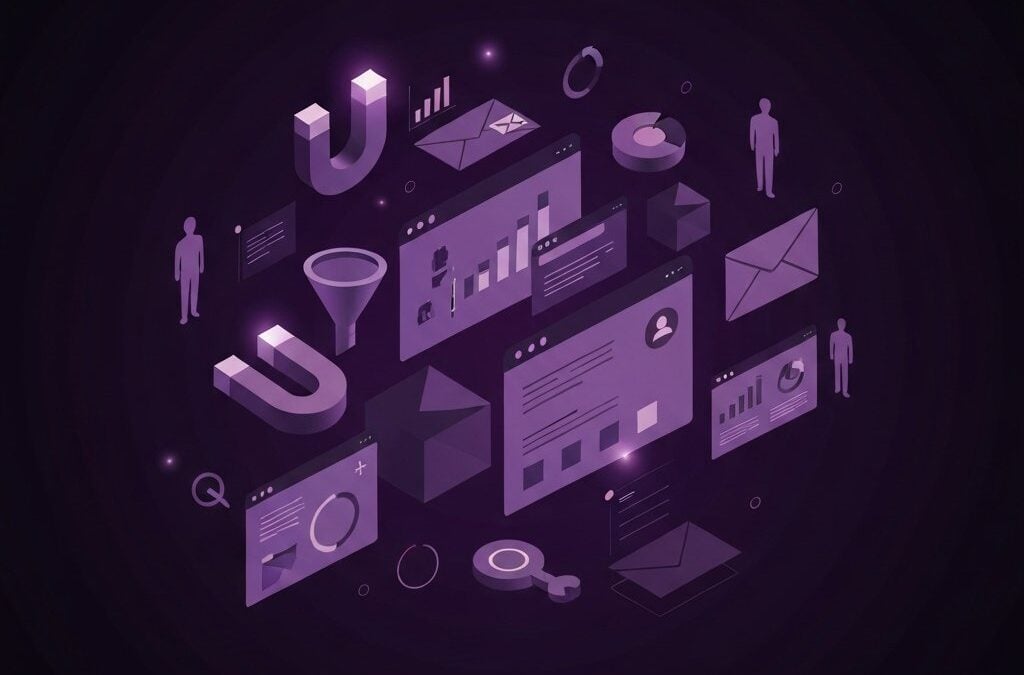The Evolution of Predictive Analytics in Marketing
Predictive analytics has transformed the marketing landscape. Marketers used to rely on historical trends and gut feelings to shape campaigns, but today AI algorithms process huge volumes of data with speed and accuracy. This transformation is driven by advances in machine learning and real-time data access, leading to dynamic pricing, personalized messaging, and strategic remarketing.
Predictive analytics extracts insights that can be used immediately. For example, a marketer might discover that website traffic predicts product interest, guiding budget allocation and revealing customer churn patterns or upsell opportunities. Innovations like natural language processing and computer vision further expand the analytical toolset, providing early adopters with substantial competitive advantages. For more on current trends, see insights on Forbes and IBM.
Key Benefits for Marketers
AI-powered predictive analytics offers clear advantages. Decisions become data-driven; campaigns are more targeted, leading to efficient marketing budget usage; and new opportunities in customer segmentation emerge. The table below outlines the benefits and challenges of these technologies:
| Aspect | Benefits | Challenges |
|---|---|---|
| Decision Making | Increases accuracy in strategic decisions | Requires complex data integration |
| Campaign Effectiveness | Enables personalized and dynamic campaigns | Needs skilled analysts to translate data into action |
| Budget Optimization | Data-driven allocation of funds | Initial setup costs can be high |
| Customer Insights | Highlights customer behavior and preferences | Data privacy and ethical management |
| Forecasting Future Trends | Allows proactive marketing adjustments | Models require constant updating |
How AI Enhances Predictive Analytics
AI enhances predictive analytics by automating data collection and modeling using machine learning, which spots trends and learns from patterns. With minimal human intervention, these systems forecast future market conditions with improved accuracy. Acting like a digital crystal ball, AI-driven tools detect subtle shifts in consumer behavior, enabling agile adjustments in resource allocation and campaign strategies.
For detailed steps on implementing these technologies, consider exploring guides on Domo and additional insights from IBM.
Implementing Predictive Analytics in Marketing Campaigns
Start by following these core steps:
- Collect and clean data from varied channels.
- Use AI algorithms to detect patterns in historical data.
- Validate models by comparing predictions with actual outcomes.
- Adjust targeting and messaging strategies based on insights.
- Monitor performance and refine models continuously.
Emphasizing clean data and a systematic approach ensures that predictive analytics captures specific consumer segments. For a comprehensive guide on data management, refer to trusted resources available online.
Real-World Applications and Success Stories
Companies worldwide have unlocked the potential of AI-powered predictive analytics. E-commerce businesses, for instance, customize product recommendations based on refined analytical processes, while subscription platforms predict churn rates, enabling timely retention strategies. In one case, a retail brand saw a 30% improvement in conversion rates due to precise targeting derived from predictive insights.
Read our success stories for more internal examples, and explore case studies on sites like Forbes for external validation.
Comparison: Traditional vs. AI-Driven Marketing Analytics
| Feature | Traditional Analytics | AI-Driven Predictive Analytics |
|---|---|---|
| Data Processing | Manual or batch processing | Real-time, automated processing |
| Decision Basis | Historical trends and intuition | Data-driven insights and forecasts |
| Speed of Insights | Slow and labor-intensive | Fast, event-driven insights |
| Personalization | Limited by available data | High precision in personalization |
| Adaptability | Rigid, fixed models | Dynamic models that learn and adapt |
| Cost Efficiency | Lower initial cost but limited scalability | Potential for high returns despite setup cost |
Overcoming Challenges and Ethical Considerations
Despite its advantages, AI-driven predictive analytics faces challenges related to data quality, ethical considerations, and model transparency. Robust data infrastructure and diligent data cleaning are prerequisites, while ethical concerns such as algorithmic bias require thorough testing. It is essential that marketing teams adhere to responsible data practices, ensuring transparency and fairness in their predictive models.
For further ethical guidelines, consider exploring resources available from IBM and detailed frameworks on Domo.
Future Trends in Predictive Analytics for Marketing
Future developments in predictive analytics will likely integrate emerging technologies such as augmented reality and IoT data, offering even more robust tools to marketers. Continuous learning algorithms promise to refine insights over time without human intervention, making strategies not only faster but increasingly precise.
Stay updated with evolving trends through industry articles on Forbes and other reputable platforms.
Conclusion and Actionable Insights
AI-powered predictive analytics equips marketers with the tools to navigate uncertainty, optimize campaigns, and achieve improved ROI. With clean data, ethical practices, and relentlessly refined models, this technology transforms traditional marketing into a dynamic, forward-looking strategy.
- Begin with clean and comprehensive data collection.
- Utilize AI algorithms to analyze customer behavior.
- Regularly monitor and refine your predictive models.
- Balance innovation with ethical data practices.
- Learn from real-world success stories and comparative analyses.
The evolution of AI in marketing is an ongoing journey, offering significant opportunities for those who embrace its full potential.
References
For further exploration, consider reading detailed articles on predictive analytics from Mailchimp, Forbes, and IBM. Additional insights on ethical data practices can be found in resources provided by Domo and Coschedule.



